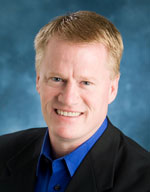
John U. Bacon
College football coaches are far from the richest people in sports, but they could be the most powerful. That might seem far-fetched, but not to the disciples of Bear Bryant, Woody Hayes, and Tom Osborne, to name just three, who rose to become almost spiritual leaders at their schools.
At University of Michigan president James Duderstadt’s retirement banquet in 1996, he said being president wasn’t easy, but it came with some nice perks. He even got to meet the man thousands of people considered God. “No,” he said, “not Bo Schembechler, but the Dalai Lama.”
It got a laugh, but it also revealed how much presidents both fear and resent their coaches’ power, which can eclipse almost everything else on campus. The best that schools can hope for is an enlightened despot, one who keeps things clean – while winning ten games a year and beating their arch-rival.
Michigan has been lucky. Its biggest icons – Fielding Yost, Fritz Crisler, and Bo Schembechler – were not just revered, they were restrained, refusing to resort to the dirty tactics their opponents used on and off the field.
No one in the history of Penn State stamped the school more than Joe Paterno did. He led the Nittany Lions to five perfect seasons, and did it the right way. He didn’t spend a dollar to expand his humble ranch home, instead donating more than $4 million to expand the university.
As Mark Twain said, once a man earns a reputation for hard work, he can sleep until noon. Likewise, Paterno’s image eventually took on a life of its own, one so powerful no mere mortal dared question it.
The acid test was his former top assistant, Jerry Sandusky, who received the first formal complaint about his questionable conduct from a boy’s mother back in 1998. This introduced a pattern of reports, with all of them systematically squelched by Paterno and Penn State. Having seen Michigan’s coaches spend 16-hour days together – which is typical at that level – I find it impossible to believe Penn State’s coaches weren’t all too aware of Sandusky’s behavior, and the danger it posed. [Full Story]






